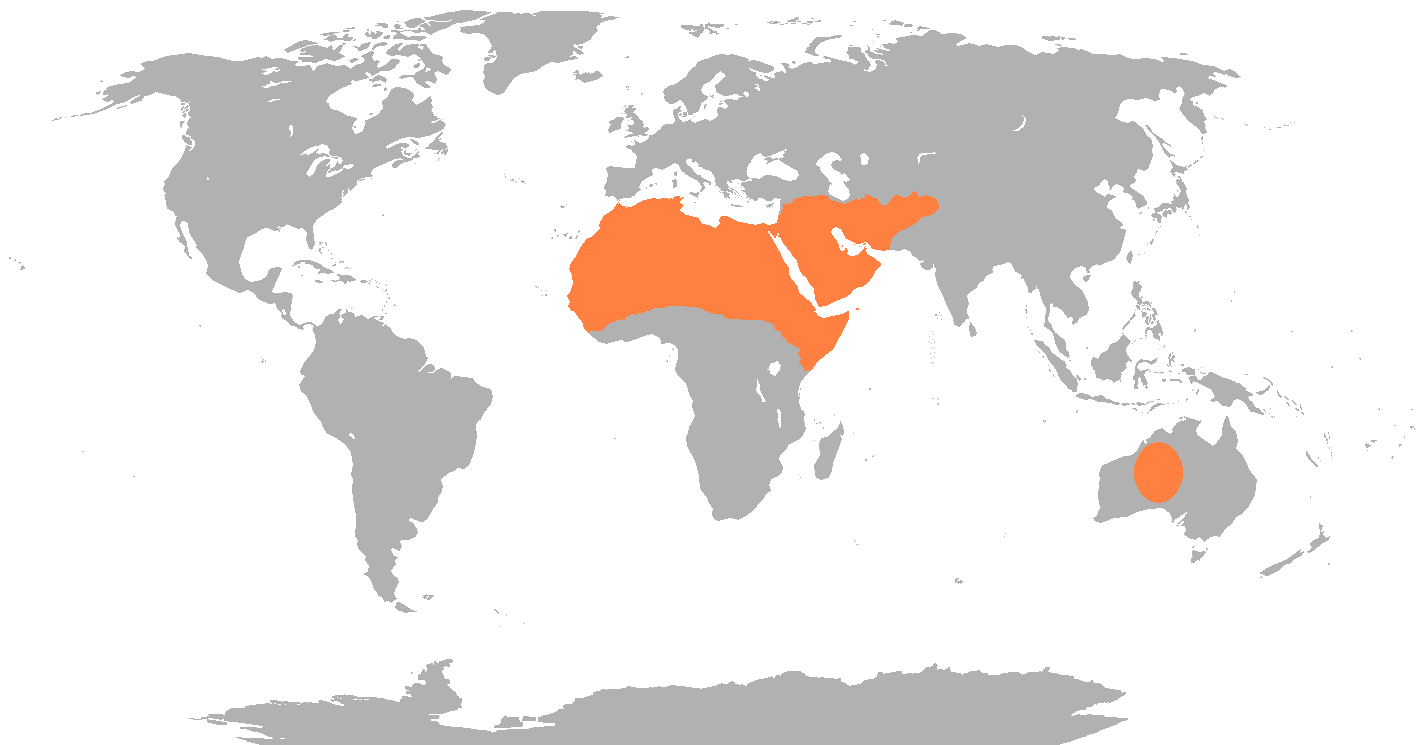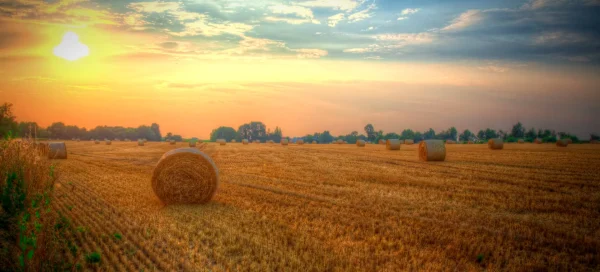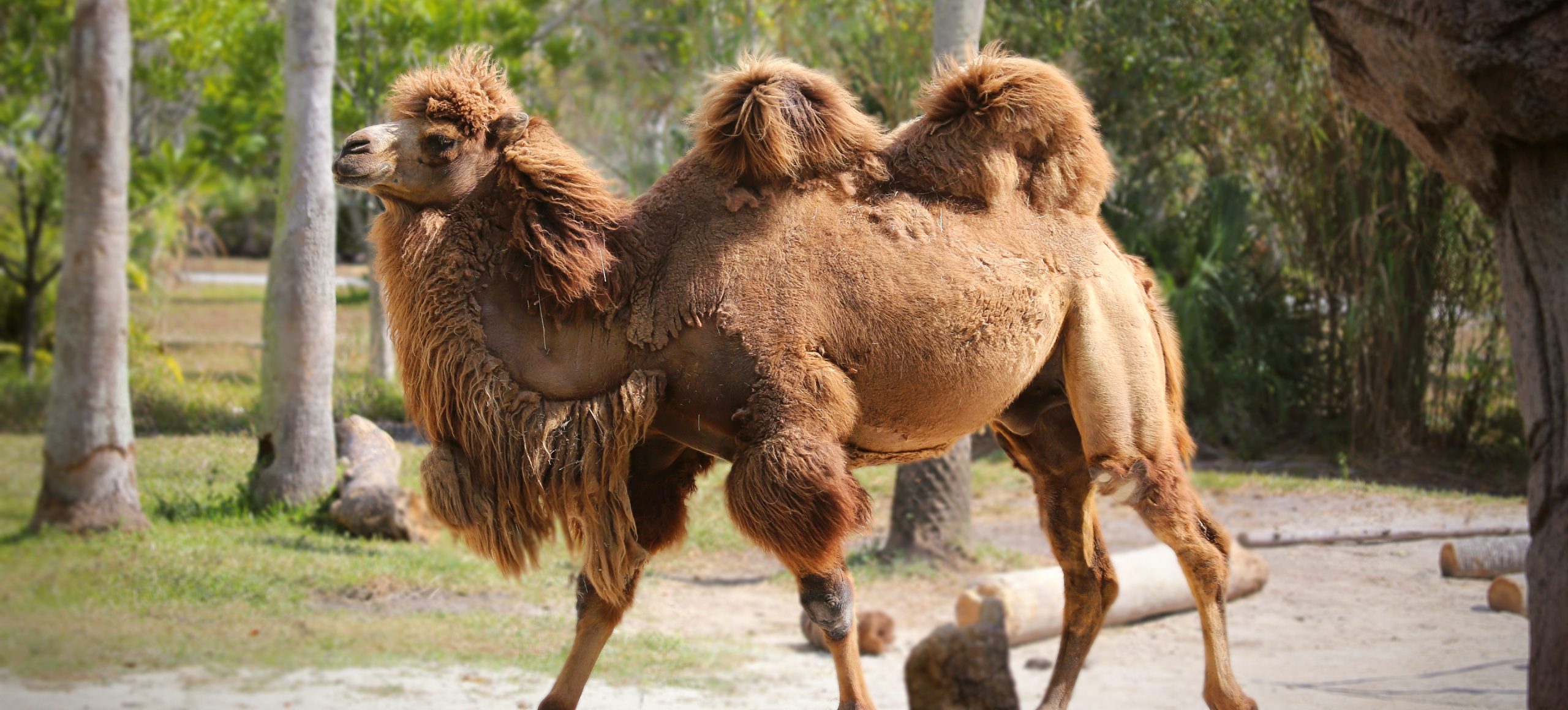Overview
The Dromedary Camel (Camelus dromedarius), also known as the Arabian camel, is a large, even-toed ungulate renowned for its distinctive single hump. This hump is a reservoir of fatty tissues that can be converted into water and energy, enabling the camel to thrive in harsh desert environments. Native to the arid regions of the Middle East and the Horn of Africa, the Dromedary Camel has been domesticated for over 4,000 years and is utilized for transportation, milk, meat, and as a beast of burden. These camels are supremely adapted to life in extreme conditions, with thick eyelashes, ear hair, sealable nostrils that protect against sand, and wide, leathery feet to prevent sinking into the sand.
Dromedary Camels can go without water for weeks, losing up to 25% of their body weight to dehydration without harm—a feat unmatched by most other mammals. They can rehydrate up to 40 gallons of water in one go. Their body temperature can fluctuate to conserve water, reducing the need for sweating. These adaptations, combined with their friendly nature and endurance, have made Dromedary Camels invaluable to the inhabitants of desert landscapes.
The species plays a significant role in the cultures of North African and Middle Eastern societies, featuring prominently in traditions, economies, and folklore. Despite their domestication, feral populations of Dromedary Camels exist in Australia, where they were introduced in the 19th century and have since become the largest wild camel population globally. Their presence in Australia is a testament to their adaptability but also poses environmental challenges.
Taxonomy
Kingdom
Phylum
Class
Order
Family
Genus
Species
Type
Current distribution:
While no truly wild populations of Dromedary Camels remain in their native range due to extensive domestication, Australia hosts a significant feral population, estimated to be the largest in the world. Introduced in the 19th century to assist in the exploration and development of the Australian interior, these camels have thrived in the country's vast desert regions. Over time, they have adapted to the arid Australian environment, demonstrating the species' remarkable ability to survive and proliferate in harsh conditions.
In response to the ecological challenges posed by the growing feral camel population, conservation efforts in Australia are now aimed at mitigating the impact of this non-native species on the ecosystem. These camels compete with native wildlife for food and water resources, damage vegetation, and threaten the stability of local habitats. Meanwhile, in their native range across the Middle East and North Africa, Dromedary Camels play a crucial role in local cultures and economies, serving as a source of transport, food, and income, underscoring their enduring significance to human societies in these regions.
Physical Description:
Dromedary Camels typically stand 6 to 7 feet (1.8 to 2.1 meters) tall at the shoulder and can reach a height of 6.5 to 7.5 feet (2 to 2.3 meters) at the top of the hump. The hump itself is a key distinguishing feature, filled with fat that can be metabolized into water and energy. Their coat color varies from a creamy white to almost black, providing some insulation against the intense heat and cold of desert environments. These camels have long, slender legs, a long neck, and a relatively small head with big eyes and long eyelashes, protecting from sand and sun.
The feet of Dromedary Camels are broad and flat, with two toes on each foot that spread wide to prevent sinking into the sand. Their fur is typically short but can be longer and thicker on the throat, shoulders, and hump, offering additional shade and protection. Dromedary Camels also have a series of physiological adaptations to desert life, including the ability to tolerate significant changes in body temperature and water content, allowing them to survive where other mammals cannot.

Lifespan: Wild: ~40 Years || Captivity: ~50 Years

Weight: Male: 1,320-2,200 lbs (600-1,000 kg) || Female: 880-1,320 lbs (400-600 kg)

Length: Male & Female: 108-120 inches (274-304 cm)

Height: Male & Female: 72-90 inches (180-230 cm)

Top Speed: 40 mph (64 km/h)
Characteristic:
Native Habitat:
The Dromedary Camel is native to the arid regions of the Middle East and the Horn of Africa, where it has been domesticated and is widely used as a draft and pack animal. Their natural habitat includes desert landscapes, arid grasslands, and scrublands, where they roam for food and water. The extreme conditions of these environments have shaped the Dromedary’s unique adaptations, making them one of the most resilient and efficiently adapted mammals for desert life.
In addition to their native range, Dromedary Camels have been introduced to other parts of the world, most notably Australia, where they have established the only known feral populations. These introduced camels have adapted well to the Australian outback, thriving in environments similar to their native habitats.
Biomes:
WWF Biomes:
Biogeographical Realms:
Countries:
Diet:
Diet & Feeding Habits:
Dromedary Camels are herbivores with a diet comprising various desert vegetation, including thorny plants, grasses, herbs, and leaves, demonstrating their adaptability in nutrient-scarce environments. They can eat some plants that are indigestible or toxic to other animals, thanks to their tough mouthlinings. This ability allows them to maximize the scarce resources in their desert habitats.
Their feeding method, characterized by selective browsing, enables them to consume a wide range of vegetation. Camels are also known to rehydrate quickly, being able to drink large volumes of water in a short period when available. This rapid drinking capability is crucial for their survival, allowing them to replenish the water lost through dehydration during dry periods.
Mating Behavior:
Mating Description:
Dromedary Camels have a seasonal breeding pattern, with most mating activity occurring during the rainy season when resources are more abundant. Males become more aggressive during the mating season, exhibiting behaviors such as inflating their soft palate (dulla) outside their mouth to attract females. They may also emit a loud, rumbling vocalization and spread their urine to signal their readiness to mate.
Females typically give birth to a single calf after a gestation period of approximately 13 months. The young are born well-developed and can stand and walk within hours of birth. Calves may continue to nurse for up to 1-2 years, although they begin to graze on vegetation within a few weeks. The close bond between mother and calf is maintained until the calf is mature enough to become independent.
Reproduction Season:
Birth Type:
Pregnancy Duration:
Female Name:
Male Name:
Baby Name:
Social Structure Description:
Dromedary Camels exhibit a complex social structure in wild (feral) and domesticated settings. In the vast deserts of Australia, where significant feral populations exist, these camels are typically organized into groups known as herds. These herds are often led by a dominant male, primarily consisting of females and their offspring. The size and dynamics of these groups can vary greatly, ranging from small, closely-knit family units to large congregations that include several families traveling and foraging together. This social organization plays a crucial role in their survival, offering protection against predators and facilitating finding food and water sources in the challenging desert environment.
In contrast, human management practices significantly influence the social structure of Dromedary Camels in domesticated environments. Humans often determine the composition of camel groups based on factors such as age, sex, and the purpose for which the camels are being raised, whether for work, milk production, or breeding. This human-imposed structure can alter natural social hierarchies and interactions among camels. However, even within these managed settings, camels exhibit social behaviors, forming attachments and displaying a hierarchy within the group. The ability of Dromedary Camels to adapt to both natural and human-modified environments showcases their social flexibility and the importance of social bonds in their overall well-being.
Groups:
Conservation Status:
Population Trend:
The global population of Dromedary Camels remains robust, a testament to their successful domestication and the extensive care they receive from humans across their native and introduced ranges. The feral camel population has flourished in Australia, where they were introduced in the 19th century, and is now estimated to exceed 1 million individuals. While demonstrating the camel’s remarkable adaptability, this burgeoning population has also led to significant environmental concerns, particularly regarding the impact on native vegetation and water resources, which are vital for the survival of Australia’s indigenous species and ecological balance.
Efforts to manage Australia’s growing feral camel population have included measures such as culling and promoting a camel meat industry aimed at reducing their numbers and mitigating their environmental impact. Meanwhile, back in their native range across the Middle East and North Africa, Dromedary Camels continue to play a vital role in the livelihoods of rural communities. These camels are a key mode of transportation in arid regions and a crucial source of milk, meat, and wool, underscoring their economic and cultural importance in these areas.
Population Threats:
In Australia, feral Dromedary Camels pose significant environmental threats, primarily due to their competition with native species for limited water and food resources. The camels’ feeding habits lead to considerable damage to the vegetation, stripping areas of native plants and contributing to the degradation of habitats crucial for the survival of indigenous wildlife. Additionally, the heavy foot traffic of large camel herds exacerbates soil erosion, disrupting the natural landscape and leading to further ecological imbalance. These impacts underscore the challenges posed by the feral camel population in maintaining Australia’s biodiversity and ecological health.
In contrast, within their native range, Dromedary Camels face different challenges, largely stemming from human activities. Overexploitation of camels for their meat, milk, and hides places significant pressure on domesticated populations, potentially leading to sustainability issues. Habitat loss due to desertification, exacerbated by climate change and unsuitable land management practices, further threatens their existence. Moreover, domesticated camels are susceptible to a range of diseases that can decimate populations, highlighting the need for improved veterinary care and management practices to ensure the health and longevity of these valuable animals.
Conservation Efforts:
In Australia, conservation efforts for Dromedary Camels are geared towards mitigating their impact on local ecosystems, where they have been classified as invasive. To manage their burgeoning population, authorities have implemented various control measures, including culling and establishing a camel meat industry aimed at reducing their numbers in a manner that also benefits the economy. Additionally, significant research is being conducted to understand the full extent of the ecological impacts caused by the feral camel populations, to inform future management strategies, and to promote practices that ensure the sustainable coexistence of camels with native Australian species.
In their native range across the Middle East and North Africa, conservation efforts take a different approach, focusing on sustainably integrating Dromedary Camels into the local economy and culture. These efforts include developing management practices that safeguard the welfare of the camels, ensuring they are kept in conditions that meet their physiological and social needs. Furthermore, conservation strategies aim to preserve communities’ traditional ways of life that depend on camels for transportation, food, and livelihood, ensuring that this relationship can continue without depleting the camel populations or their environments.
Additional Resources:
Fun Facts
- Dromedary Camels can close their nostrils voluntarily to protect against sandstorms.
- Their unique three-chambered stomach allows them to re-chew their food, like cows.
- Camels’ humps are made of fat, not water, contrary to popular belief.
- To conserve water, the Dromedary Camel can vary its body temperature from 34°C to 41.7°C.
- They have been known to carry loads of up to 600 pounds (272 kg) over 25 miles (40 km) daily.
- Dromedary Camels’ milk is rich in vitamins, minerals, and immune-boosting proteins and is considered a superfood in many cultures.
- Their thick and tough footpads allow them to walk easily over hot desert sands.
- Dromedary Camels can swim well when needed despite their desert habitat.
- The name “dromedary” comes from the Greek word “dromos,” meaning “road” or “runner,” reflecting their use as fast desert travelers.
- In addition to being ridden or used as pack animals, camels are also raced for sport in some parts of the Middle East.














